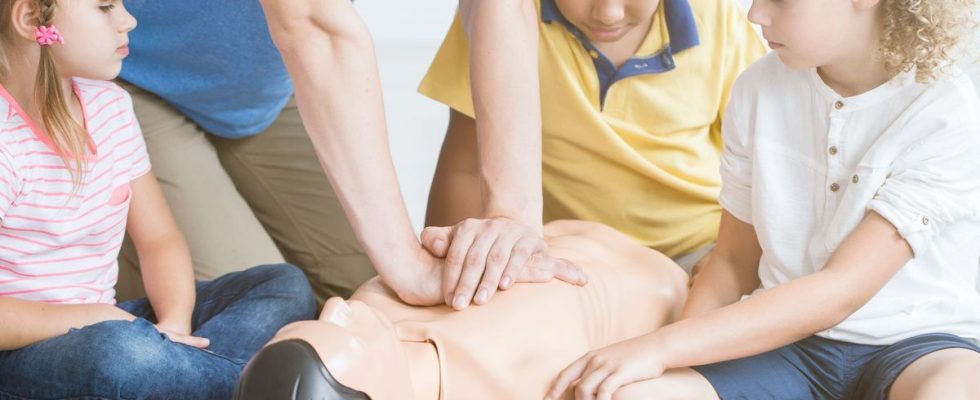Published on
Updated
Reading 2 mins.
According to the American Heart Association, teaching children how to react to a medical emergency from an early age would improve the care of victims. The first basic gestures would be accessible from 4 years old.
He is never too young to learn first aid. And this awareness could even come much sooner than you think. According to a publication by the American Heart Association and the European Resuscitation Council and the International Liaison Committee on Resuscitation, 4-year-old schoolchildren are quite capable of sounding the alarm and calling for help in the face of a medical emergency. Older children, from 10 years old, could also initiate cardiac massage.
Call for help, give an address…
According to the health organizations cited, not all first aid acts can be done by children, but if they are trained (and if the rest of the population is too), the response time for a victim would be reduced and the chances of survival of the victims increased.
“Although young children may not have the strength to perform correct chest compressions, they can learn basic information about what to do if someone suddenly collapses”says Dr. Comilla Sasson, member of the statement’s drafting committee.
Children as young as 4 years old can learn what the emergency number is (15 or 18 in France), how to call it, as well as know their address so that a dispatcher can send services, experts say. emergency medical services to their homes.
At 10, older children can also learn to assess unconsciousness, abnormal breathing, initiate cardiopulmonary resuscitation (chest compressions and mouth-to-mouth) and even what an automated external defibrillator is, and how it is used to help heart people.
Act fast to increase survival
According to the US Centers for Disease Prevention (CDC), 70% to 90% of people who have cardiac arrest outside the hospital die before they get there because people around them failed to recognize an emergency or how to help.
“We know that one of the biggest obstacles to increasing survival from cardiac arrest has been and continues to be not recognizing that someone has had a cardiac arrest, activating 9- 1-1 early, (the equivalent of 15 in France) to start cardiopulmonary resuscitation and know how to administer first aid as soon as possible” Sasson said.
As part of this, various medical groups have long emphasized the importance of teaching young children what to do in the event of a medical emergency at home, school or in other settings.
“We know that the more someone is exposed to this information, the more likely they will be to act in an emergency. The American Heart Association (AHA) believes that no one is too young or too old to learn about CPR, first aid, and what cardiac arrest is.” Sasson said.
Train from an early age to save lives
Basic training in resuscitation for school children will have the potential to educate entire generations on how to react to cardiac arrest and thus increase survival outside the hospital, conclude the two associations.
Such an initiative would also be welcome in France: according to the latest figures, only 40% of French people are trained in lifesaving gestures… A clearly insufficient figure.
